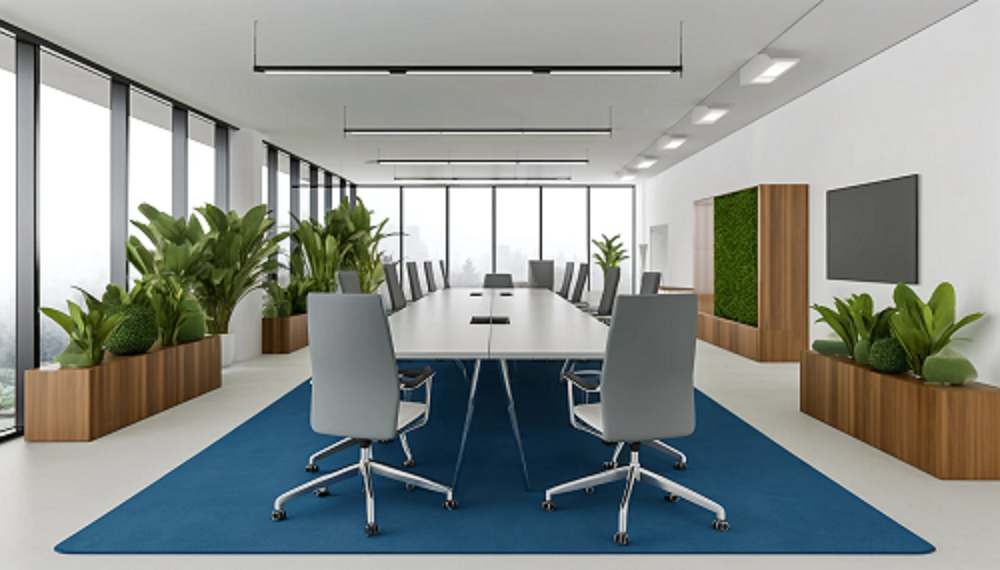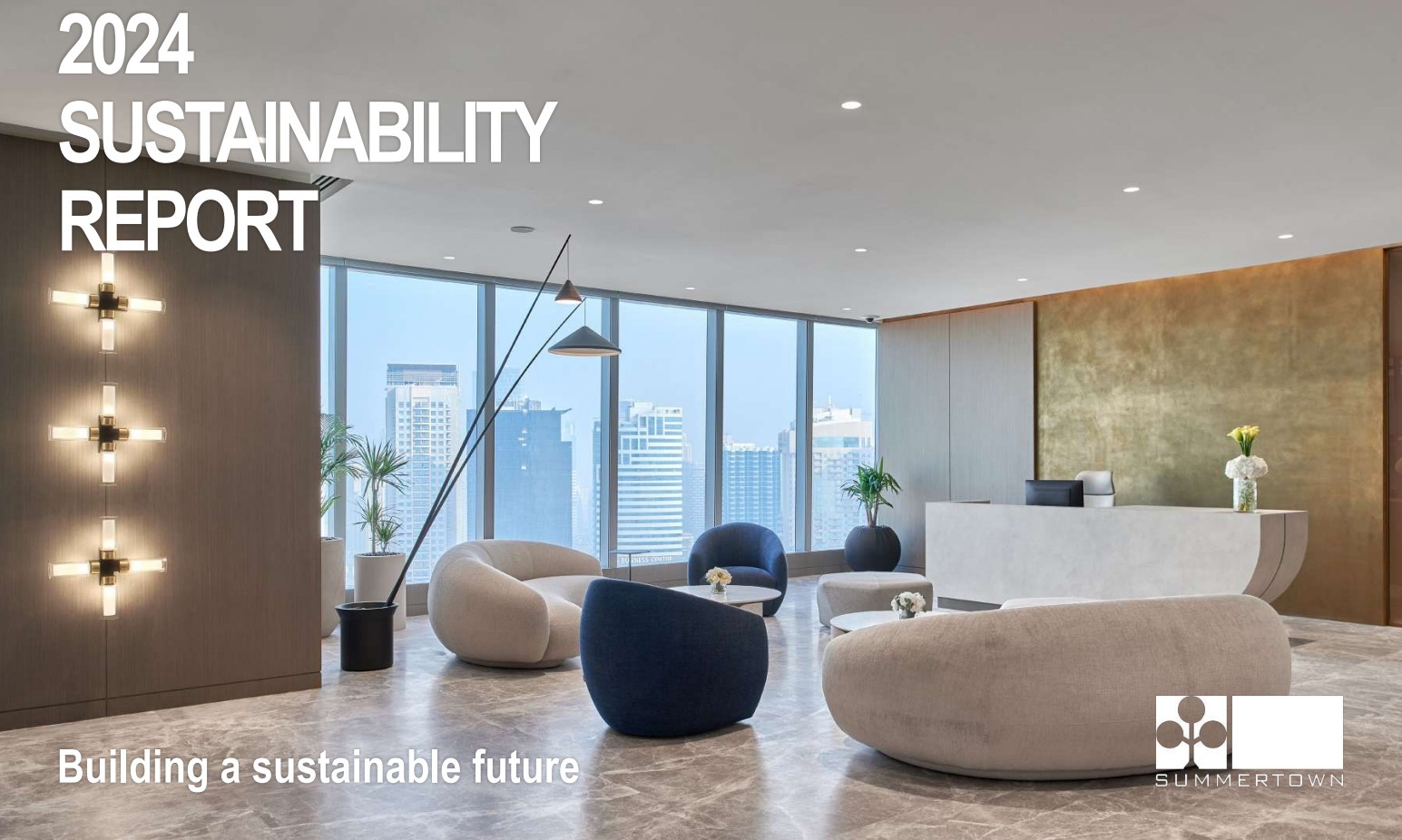Eco-friendly office design seeks to minimize the environmental impact of business operations through thoughtful choices in materials, energy systems, and workspace layouts. This design philosophy is integral to modern corporate strategies, as it aligns with global sustainability goals and helps reduce carbon footprints. Companies adopting these designs are able to contribute to environmental preservation while also enhancing their operational efficiency.
Key features of eco-friendly office designs include maximizing natural light, improving indoor air quality with non-toxic materials and effective ventilation, and reducing energy consumption through efficient appliances. These elements contribute to a healthier workplace, boosting employee productivity and satisfaction. Certifications such as LEED provide benchmarks for these practices, evaluating buildings on criteria like energy efficiency, water usage, and overall environmental impact. Achieving these certifications not only underscores a company’s commitment to sustainability, but also makes it more attractive to eco-conscious employees and clients.
The trend toward sustainable business practices is driven by the recognition of their long-term benefits. As more companies integrate eco-friendly designs, they set new standards for office environments that prioritize both environmental and business efficiency. The following sections will delve into the specific materials and strategies used in eco-friendly office designs, illustrating how they support sustainability and operational effectiveness.
Materials Used in Eco-Friendly Fit Outs
Choosing sustainable materials is a crucial part of eco-friendly office design. These materials – often derived from recycled content, renewable sources, or known for their durability – help to minimize the environmental impact throughout their lifecycle. Let’s take a closer look at the kind of materials used in sustainable fit outs:

Recycled Materials: Incorporating recycled metals, glass, and plastics reduces waste and conserves natural resources. For example, recycled steel is a popular choice due to its strength and infinite recyclability, making it a sustainable option for structural components and furniture. Recycled glass can be used in countertops, tiles, and decorative elements, adding both functionality and aesthetic appeal. Plastics, often considered a waste product, are being repurposed into furniture and fixtures, demonstrating innovation in sustainable design.
Renewable Materials: Materials like bamboo, cork, and sustainably sourced wood are ideal for eco-friendly office fit outs. Bamboo – noted for its rapid growth and minimal pesticide requirement – serves as an excellent material for flooring, wall cladding, and furniture, offering both durability and a reduced carbon footprint. Cork, which is harvested from the bark of cork oak trees, is another renewable material known for its thermal and acoustic insulation properties. Similarly, opting for sustainably sourced wood ensures that forests are managed responsibly, contributing to long-term environmental health and resource availability.
Low-VOC Materials: To maintain healthy indoor air quality, low-VOC (Volatile Organic Compounds) products are essential. Paints, adhesives, and sealants that emit fewer VOCs significantly improve air quality, supporting employee health and adhering to stringent environmental standards. These materials are critical in creating a safe and non-toxic work environment, reducing the risk of respiratory issues and other health problems associated with poor air quality.
Natural Fibers: Wool, jute, and organic cotton are preferred for carpeting and upholstery in eco-friendly offices. These biodegradable materials not only enhance indoor air quality but also add a touch of natural elegance to office interiors. Wool carpets are naturally flame-retardant and durable, while jute and cotton offer a soft, natural feel, making them ideal for creating comfortable and sustainable office spaces.
Biodegradable Materials: Biodegradable plastics and plant-based disposables decompose naturally, reducing landfill waste. Using such materials aligns with eco-friendly design principles and showcases a company’s commitment to sustainability. These materials are particularly useful for office accessories and disposables, ensuring that everyday office operations are environmentally friendly.
Incorporating these materials into office designs demonstrates a company’s dedication to sustainability and aids in achieving certifications like LEED, which evaluates the environmental attributes of building materials, including recycled content and lifecycle impacts.
Environmental and Economic Benefits
Sustainable materials offer significant environmental and economic benefits. Durable materials reduce the need for frequent replacements, cutting long-term maintenance costs. Businesses investing in sustainable materials can also qualify for government incentives, helping offset initial expenses and reducing operational costs.
The thoughtful selection of materials in eco-friendly office fit outs strikes a balance between environmental responsibility and functional performance. By prioritizing sustainability, businesses not only contribute positively to the environment but also create healthier, more productive workplaces. This commitment to sustainability can also enhance a company’s reputation, attracting clients and employees who value environmental responsibility.
Energy Efficiency and Sustainable Fit Out Strategies
Implementing energy-efficient and sustainable design strategies is critical for eco-friendly office fit-outs. These strategies reduce environmental impact and lead to substantial cost savings over time. Let’s take a deeper dive into what constitutes an energy efficient and sustainable fit out:
1.Smart Lighting Systems: LED lighting plays a big role in energy-efficient office design. Smart systems can adjust brightness based on natural light levels and occupancy, reducing energy consumption and improving the work environment. Motion sensors and daylight harvesting systems can ensure that lights are only used when necessary, minimizing energy usage and costs.
2. Energy-Efficient HVAC Systems: Upgrading to energy-efficient heating, ventilation, and air conditioning (HVAC) systems can drastically cut energy use. Technologies such as programmable thermostats and energy recovery ventilators optimize performance, enhancing
3. Comfort and reducing costs. These systems can be programmed to adjust temperatures based on occupancy patterns, ensuring that energy is not wasted heating or cooling empty spaces.
4. Solar Energy Solutions: Integrating solar panels helps reduce reliance on non-renewable energy sources. Solar energy can power lighting, HVAC systems, and other office equipment, significantly lowering the building’s carbon footprint. While installation costs can be high, long-term savings and government incentives make solar energy a viable option for many businesses. Solar panels can also be integrated with battery storage systems, providing a reliable energy source outside daylight hours and even during power outages.Sustainable Water Management: Water efficiency is another key aspect of sustainable office fit outs. Installing low-flow fixtures in bathrooms and kitchens, as well as using water-efficient landscaping, can significantly reduce water usage. Greywater recycling systems further enhance sustainability by repurposing water from sinks and showers for non-potable uses. Rainwater harvesting systems can also be installed to collect and reuse rainwater for irrigation and other non-potable purposes.
5. Insulation and Building Envelope Improvements: Proper insulation and building envelope sealing are crucial for maintaining energy efficiency. High-quality insulation helps stabilize indoor temperatures, reducing the need for heating and cooling. Energy-efficient windows and doors also prevent heat gain and loss, maintaining comfort with less energy use. Reflective roofing materials and green roofs can further enhance energy efficiency by reducing heat absorption.
6. Building Automation Systems (BAS): BAS technology enables centralized control of a building’s systems, including lighting, HVAC, and security. These systems can adjust settings automatically based on usage patterns and environmental conditions, ensuring optimal energy use throughout the building. Advanced BAS can also provide real-time data on energy consumption, helping facility managers identify areas for improvement and implement energy-saving measures.
Adopting these energy-efficient strategies not only supports environmental sustainability but also provides significant economic benefits. Reduced energy consumption leads to lower utility bills, and investments in energy-efficient technologies often qualify for tax credits and incentives. These strategies also work to create more comfortable and healthful work environments, increasing employee satisfaction and productivity.
Energy-efficient fit outs also further extend the lifespan of office equipment and infrastructure by reducing wear and tear. This can result in further cost savings over time, making a sustainable fit out not only environmentally responsible, but also economically advantageous.
Benefits of Green Spaces in Office Fit Out
Integrating green spaces into the office fit out is increasingly popular for enhancing workplace environments. These spaces, ranging from indoor plant installations to outdoor green areas, significantly contribute to employee well-being and environmental sustainability.
1. Enhanced Mental Wellbeing: Plants and greenery in office environments have been shown to reduce stress and improve mental health. Natural elements create a sense of calm, boosting creativity and productivity by providing a refreshing environment that breaks the monotony of traditional office setups. Research has demonstrated that exposure to nature can lower cortisol levels, the hormone associated with stress, leading to a more relaxed and focused workforce.
2. Improved Air Quality: Plants naturally filter air by absorbing toxins and emitting oxygen, improving overall air quality within the office. This not only helps mitigate pollutants but also enhances employee health by reducing respiratory problems and allergies. Certain plants, such as the spider plant and peace lily, are particularly effective at removing common indoor pollutants like formaldehyde and benzene.
3. Temperature Regulation: Green spaces help regulate indoor temperatures, reducing reliance on heating and cooling systems. Plants release moisture through transpiration, cooling the environment during hot weather. Larger plants or green walls can provide insulation during colder months, contributing to energy savings. Green roofs and walls can also reduce the urban heat island effect, lowering temperatures in and around the building.
4. Noise Reduction: Plants have natural sound-absorbing properties. Strategically placed, they can reduce noise levels in open-plan offices, leading to improved concentration and decreased stress among employees. Dense foliage and vertical gardens can act as effective sound barriers, absorbing and deflecting noise.
5. Aesthetic Appeal and Space Definition: Green spaces enhance the aesthetic appeal of offices, serving as natural art and bringing a lively atmosphere. Plants can also define different areas within an office, creating visual breaks between workstations or departments. This can help organize the space more effectively and make it more visually interesting.
Tips for Maintaining Sustainable Green Spaces
Well maintained green spaces and plant displays will produce the benefits we have discussed, however it is worth noting the following best practices to ensure the success of this investment:

- Choice of Plants: Select low-maintenance species suitable for indoor environments, considering factors like light requirements and water needs. Plants like succulents, ferns, and pothos are ideal for indoor settings due to their resilience and low maintenance needs.
- Sustainable Practices: Implement efficient watering systems, like drip irrigation, and use organic fertilizers and pest control methods to minimize environmental impact. Self-watering planters and hydroponic systems can also reduce water usage and maintenance requirements.
- Regular Maintenance: Ensure plants are pruned, repotted, and maintained to keep them healthy and effective as part of the green space. Regularly check for pests and diseases, and replace any plants that are not thriving to maintain the overall health and appearance of the green space.
Incorporating green spaces into office fit outs not only creates a more enjoyable and healthful workplace but also contributes to sustainability. These spaces promote a balance of functionality and aesthetics, transforming the office environment and enhancing employee satisfaction. Green spaces can also serve as a visual reminder of the company’s commitment to environmental responsibility, reinforcing sustainable practices within the workplace.
Case Studies of Eco-Friendly Office Fit Outs
Successful implementations of eco-friendly office fit outs can provide valuable insights into the practical benefits and innovative strategies of sustainable fit-outs. Here are four of our case studies that exemplify the integration of sustainability practices in modern office environments:
LinkedIn Office Fit-Out
The LinkedIn office in the UAE was designed to meet LEED Gold standards, focusing on sustainability. The office features energy-efficient lighting and HVAC systems, low-VOC materials, and extensive use of recycled materials. By maximizing natural light, the design not only reduces energy consumption but also enhances the well-being and productivity of employees. The project also incorporated water-efficient fixtures and a greywater recycling system, further reducing its environmental impact.
DMCC Office
This project demonstrates the application of sustainable design within a high-traffic commercial tower. Achieving LEED certification, the DMCC office incorporates high-efficiency water fixtures, optimized energy performance systems, and sustainable material use. The project highlights how targeted sustainable practices can be effectively implemented in a corporate office setting to achieve environmental and operational efficiencies. The office also features a green wall and indoor plants to improve air quality and employee well-being.
DMCC Uptown Tower, Level 9
Located in the same tower as the first DMCC project, our fit out on Level 9 office extends the commitment to sustainable design. This office was also designed to meet LEED certification standards, focusing on energy efficiency and indoor environmental quality. The project showcases the replication of successful sustainability strategies in a different space within the same building, underlining the scalability and adaptability of green design principles. Innovations such as smart lighting systems and advanced building automation systems were key features of this fit-out.
ORA Developers Office
The ORA office integrates biophilic design elements with advanced sustainable technologies. It features extensive indoor and outdoor green spaces, supported by state-of-the-art energy systems that ensure minimal environmental impact while maintaining high comfort levels. The ORA project exemplifies how cutting-edge technology and thoughtful design can converge to forge a highly sustainable and visually appealing workplace. The office’s design also emphasizes natural light and ventilation, creating a bright and airy work environment.
These case studies not only highlight the environmental benefits, such as reduced carbon emissions and enhanced employee health, but also showcase significant economic advantages. Sustainable designs lead to decreased operational costs due to lower energy and water consumption. These offices naturally attract high-quality tenants and employees who prioritize environmental responsibility, enhancing the company’s brand reputation and overall employee satisfaction.
The Green Blueprint for Sustainable Office Fit Outs
Eco-friendly office design offers substantial benefits for both the environment and the workplace. By incorporating sustainable materials, implementing energy-efficient strategies, and integrating green spaces, businesses can create healthier, more productive, and visually appealing workspaces. The case studies we have discussed highlight how these principles can be effectively applied, achieving significant environmental and economic gains while setting a new standard for corporate responsibility. The use of recycled, renewable, low-VOC, and biodegradable materials in office fit outs not only enhances sustainability but also contributes to a positive brand image and operational efficiency.
Adhering to recognized sustainability certifications such as LEED further solidifies a company’s commitment to eco-friendly practices. Such certifications provide a framework for achieving high environmental performance and offer tangible benefits, including improved indoor air quality, reduced operational costs, and increased employee well-being. As more businesses adopt sustainable office fit out strategies, they lead the way in creating a greener, more responsible corporate culture.
For businesses looking to transform their workspaces into sustainable environments, the first step is to consult with sustainable office fit out experts. Summertown can seamlessly guide you through the process of achieving a sustainable office fit out, from selecting materials to implementing energy-efficient solutions. Connect with Summertown today to start your journey towards a greener, more sustainable office space.
Sources
- Journal of Environmental Psychology – The Impact of Green Spaces on Employee Productivity and Well-being
- Harvard Business Review – Research: A Little Nature in the Office Boosts Morale and Productivity
- Energy Star – Guidelines for Energy Management
- U.S. Department of Energy – Energy Saving Tips for Commercial Buildings

